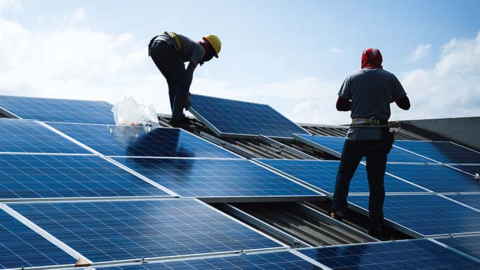With many Victorians doing it tough this year, cheaper prices for utilities is always welcome news. In July 2020, the Victorian Government announced new pricing reforms that would place pricing caps on electricity for Victorians living in embedded networks. We take a closer look at the Victorian Default Offer, what it means for customers and what it means for electricity businesses.
What is the Victorian Default Offer?
The reforms announced in July were part of a series of reforms to improve energy prices and transparency across the Victorian energy market.
These reforms resulted in the Victorian Default Offer (VDO) being implemented, which imposed pricing caps on standing offers, meaning that retailers cannot charge over these set prices.
The VDO is part of the Victorian Government’s Energy Fairness Plan which is making the electricity market fairer, simpler and more affordable for all customers.
It was introduced after an independent review found that Victorians were paying too much for their energy needs.
In September, the VDO was extended to include customers in embedded networks, which are electricity networks that are privately owned and managed, and supply electricity to a specific building or area, such as apartment buildings, caravan parks, retirement villages and small businesses.
According to the Essential Service Commission (ESC), the extended VDO reforms will benefit over 104,000 Victorian customers in embedded networks.
It’s estimated that with the new pricing caps in place, residents of apartment buildings, caravan parks and retirement villages could save between $180 and $370 a year on energy bills, while small businesses in shopping centres could save between $900 and $2,200, helping both individuals and businesses during one of the toughest times in Australia.
Phil Baxter, Chief Executive Officer of embedded network provider WINconnect, said that there were multiple reasons for price increases for Victorian customers over the past few years, including the closure of key infrastructure, as well as a lack of retail competitiveness.
“There are many reasons why power prices have escalated over the past five years. The major driver has been on the supply-side, where generation disruption such as the closure of the Hazelwood Power Station – previously one of Victoria’s largest generators –alongside significant investment in poles and wires infrastructure, have contributed to bill increases,” said Mr Baxter.
“But there have also been issues relating to retail failures whereby non-engaged customers receive unfair prices when their conditional discount agreement ends, as well as issues relating to a lack of a competitive retail environment in some states.
“The VDO has been designed as a ‘safeguard’ tariff for customers who may have let their energy agreement expire. It sets a default or ‘ceiling’ tariff that cannot be exceeded.”
What the VDO means for embedded networks customers
With the introduction of the price caps, customers across Victoria can look forward to cheaper electricity bills and the peace of mind that they are getting the best deal possible.
Mr Baxter said that the extended VDO for embedded networks has great benefits for customers and also has implications for retail competition.
“The VDO is a standard tariff that all retailers must offer. This tariff is set by the regulator and is one that is important to get right.
If the VDO is set too low, then this might be good for consumers in the short-term. However, this outcome can also have significant implications for retail competition, innovation and investment that the industry desperately needs to modernise the supply chain in the longer term,” said Mr Baxter.
There has also been some customer hesitation surrounding embedded networks in the past when the VDO was not yet implemented.
However, with price caps now in place for embedded networks, customers will begin to see the benefits of belonging to these microgrids.
“Embedded networks offer significant benefits to consumers. Through the collective power of an embedded network, consumers can gain the power to drive down their energy costs, influence the source of their energy supply mix and also support investment in distributed renewable generation within their own network,” said Mr Baxter.
“Embedded networks are the microgrids of the future. So too, any property designed as a community energy network future-proofs that community for the proliferation of smart, clean distributed generation and storage that are sure to arrive in time.
This trend, as well as the trend towards more sustainable, urban, community living, is undeniable and the benefits need to be harnessed.
“WINconnect’s solutions are pioneering sustainable communities of the future, and our hope is that one day all the communities we serve – whether that be an apartment building or a shopping centre – will become carbon neutral.
“That’s why we need to get the policy right. We believe a well-regulated, competitive framework for the future development of community energy networks is the key to ensure consumers can not only get as good as the retail market, but do better.”
Facilitating and encouraging industry compliance
One of the ultimate aims of extending the newly implemented VDO to embedded networks is to put customer’s faith back into embedded networks.
The reforms help to reign in operators who may have not been supplying customers with the best price, or who were perhaps not passing on possible savings to consumers.
However, Mr Baxter said that we shouldn’t rely solely on pricing caps to ensure that operators comply with best practices.
“The application of the VDO to embedded networks brings pricing policy in line with all other energy consumers in Victoria.
That is an important step and is well overdue. But we shouldn’t consider broad, strict price regulations to be a panacea for the issue of industry non-compliance and proliferation, whether perceived or real, of bad actors.”
Dealing with industry non-compliance requires careful and diligent work on the part of the regulator to ensure they get to the root cause of the problem.
“Sledgehammer approaches such as strict price regulation and bans on certain commercial activity do not get to the root cause of what drives these behaviours and runs the risk of destroying the embedded network benefits as providers are driven out,” said Mr Baxter.
“The reality is that there are many significant reforms that are required in this area that go beyond price regulation – including those raised by the AEMC.”
The regulations raised by the Australian Energy Market Commission (AEMC) in 2017 outlined regulatory framework to provide embedded network customers with better protections and access to more competitive offers.
These proposed laws and regulations included the registration of embedded network service providers, as well as the authorisation of off-market retailers.
It also included a plan to transition some legacy embedded networks to the new arrangements. However, more needs to be done to ensure consumers are protected and given choice in embedded networks.
“The exemption scheme, allowing non-licensed organisations to service embedded networks, is no longer fit for purpose and should be abolished,” said Mr Baxter.
“Licensed embedded network retailers are directly accountable to the regulator, the ombudsman and their customers, just like conventional retail energy providers.
“In addition to this, there are serious technical reforms that are required – first proposed by the AEMC and supported by WINconnect – to make it easier for consumers to use their power of choice within embedded networks.
This can only be tackled at a national level, with the full commitment of the AEMO and other industry members.”
It is clear that although there is some real work being done to transform Australia’s energy market into a fair, simple and regulated industry, more still needs to be done to ensure industry compliance, and that consumers are protected and supported through one of the toughest times in recent history for the country.

















